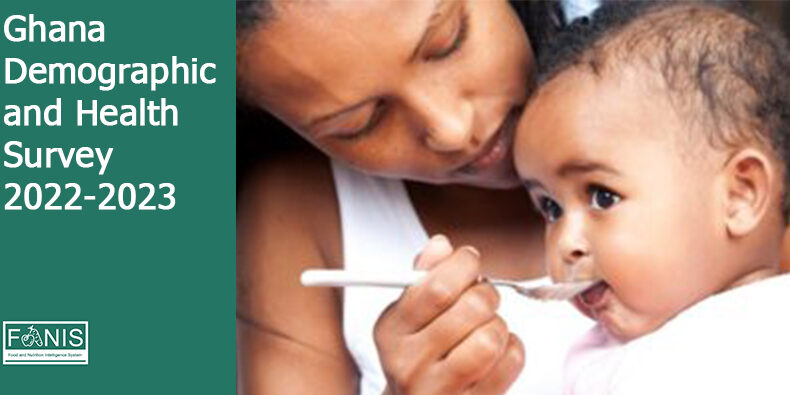Identification
- Citation: Ghana Statistical Service, ICF International. Ghana Demographic and Health Survey 2022-2023. 2024.
- Provider: Demographic and Health Surveys Program (DHS)
- Time Period Covered: October 2022 – January 2023
- Data Type: Cross-sectional, GPS coordinates (GIS), household, individual interviews, nationally representative, subnationally representative, urban-rural representative.
Summary
The Ghana Demographic and Health Survey (GDHS) 2022-2023 is a crucial component of phase 8 of the DHS series, designed to gather comprehensive demographic and health data across Ghana. The survey successfully interviewed 17,933 households, including 15,014 women aged 15-49 and 7,044 men aged 15-59, providing valuable insights into various health indicators. Key topics covered include maternal and child health, fertility rates, contraceptive use, nutrition, and health care access. The findings will inform policy decisions and program planning aimed at improving health outcomes in the country.
Version
Version Date: January 18, 2024
The GDHS is continuously updated to reflect the latest data collection methodologies and findings.
Scope
The survey encompasses a wide range of topics related to population health and demographic trends. It aims to provide reliable estimates of health indicators that are essential for monitoring progress towards national and international health goals.
Keywords: Fertility, Contraceptive use, Maternal health, Child health, Nutrition, Violence against women, Health care utilization.
Coverage
- Geographic Coverage: Nationwide across Ghana.
- The survey includes all regions of Ghana, ensuring representation of urban and rural areas as well as various socio-economic backgrounds.
Producers and Sponsors
- Primary Investigators: Ghana Statistical Service (GSS), Ministry of Health.
- Producers: ICF International.
- Funding Agencies/Sponsors:
- Government of Ghana
- United States Agency for International Development (USAID)
- President’s Malaria Initiative (PMI)
- United Nations Population Fund (UNFPA)
- United Nations Children’s Fund (UNICEF)
- World Bank
- Global Fund to Fight AIDS Tuberculosis and Malaria (GFATM)
- Korean International Cooperation Agency (KOICA)
- World Health Organization (WHO)
- UK Foreign, Commonwealth & Development Office.
Sampling
The GDHS utilized a stratified two-stage cluster sampling design to ensure national representation. A total of 18,540 households were selected from 618 clusters, with each cluster comprising approximately 30 households. The survey achieved a high response rate of 99%, with detailed demographic information collected from both men and women in the selected households.
Data Collection
Data Collection Mode: Computer-Assisted Personal Interviewing (CAPI).
Data collection was conducted by trained teams between October 17, 2022, and January 14, 2023. The process included rigorous quality assurance measures to ensure data accuracy.
Metadata Production
The metadata for the GDHS is documented comprehensively to facilitate data access and use. This includes detailed descriptions of the methodologies employed in data collection and processing. The metadata supports transparency and aids researchers in understanding the context of the data collected.
The GDHS 2022-2023 serves as a vital resource for understanding the health dynamics in Ghana. By providing up-to-date information on key demographic and health indicators, it plays an essential role in shaping public health policies and programs that aim to improve the overall well-being of the population.



